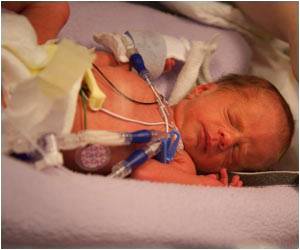The death of every other newborn in India can be traced to either low birth weight or premature delivery due to poor maternal health.

‘Kangaroo Mother Care creates a womb-like environment for the newborn that provides warmth, food, love and protection and significantly benefits all newborns, especially those who are preterm or suffer from LBW.’





This accounts for 26 percent of neo-natal deaths in the world, according to Unicef. Thirteen African countries have better infant mortality rates (IMR) than India, IndiaSpend reported in May 2016. The figures for child mortality, 0-5 years of age, are equally high: Between 1990 and 2015, more children in this age group died in India than anywhere in the world. Despite a 62 per cent reduction in child mortality over these years, the number stands at 1.3 million every year.
The deadly 28 post-birth days
An infant is said to have LBW when he/she is under 2.5 kg (5.5 pounds) at birth. A premature or preterm baby is one born alive before the completion of 37 weeks of pregnancy, according to the World Health Organization (WHO).
In India, of all infants who died before they completed 29 days post-birth, 48.1 percent suffered from LBW and premature birth, according to the Causes of Death Statistics, 2010-13 report by the census office. This figure was 35.9 percent for children under one year of age, and 29.8 percent for those in the 0-4 age group.
Advertisement
Poor maternal health
Advertisement
There are three underlying reasons for LBW, all traceable to the mother: Poor nutritional status before conception, short stature (mostly due to under-nutrition and infections during childhood) and poor nutrition during pregnancy, Narayan Ramachandran, chairman, InKlude Labs, which helps state governments implement large-scale school-based deworming in India, wrote in the Mint.
These points are corroborated by research involving 350 mothers -- conducted by the Rohilkhand Medical College in Uttar Pradesh -- to find the epidemiological factors associated with LBW among institutional deliveries.
The study revealed the following: 40 percent of expectant mothers delivered LBW babies and 76.5 percent of them had a gestational age lower than 37 weeks; 58.5 percent of these mothers were less than 20 years of age and 76.1 percent of them weighed less than 50 kg.
Incidence of LBW highest in South Asia, India second highest in the world
In 2013, as many as 22 million newborns -- an estimated 16 percent of babies born globally -- had LBW, according to UNICEF.
In terms of regional variations, South Asia had the highest incidence of LBW, with 28 per cent newborns weighing less than 2.5 kg. This region also had the highest percentage of infants (66 per cent) not weighed at birth. Sub-Saharan Africa's incidence of LBW among newborns is estimated to be 13 percent; and 54 percent newborns are not weighed at birth.
At 28 percent, India had the third highest percentage of LBW newborns, behind only Mauritania (35 percent), Pakistan and Yemen (32 percent each). Except for Pakistan, India performed worse than all its South Asian neighbours. Unicef, however, has cautioned that the data maybe inaccurate because of under-reporting.
India has most preterm births in the world
There are an estimated 15 million preterm births across the world each year, according to latest available data released by the WHO in 2012. Over 60 percent of preterm births occur in Africa and South Asia. At 3.5 million, India accounted for the most preterm births in the world, followed by China (1.17 million) and Nigeria (0.77 million).
India's Newborn Action Plan and how it works
The India Newborn Action Plan (INAP) was launched in September 2014 with the aim of ending preventable newborn deaths and stillbirths by 2030. The plan aims to attain single-digit neo-natal mortality and stillbirth rate by 2030.
INAP's main strategy is called Kangaroo Mother Care (KMC). It creates a womb-like environment for the newborn that provides the four basic needs of the baby -- warmth, food, love and protection -- and significantly benefits all newborns, especially those who are preterm or suffer from LBW.
Generally, KMC is advocated for all newborns weighing less than 2.5 kg at birth. However, in India, because of the huge burden of LBW, INAP has recommended facility-based KMC for newborns with birth weight less than 2 kg on priority basis.
India has already cut neonatal tetanus mortality by 99.76 percent and was declared as maternal and neonatal tetanus-free by the WHO, as IndiaSpend reported in October 2015.
Source-IANS










